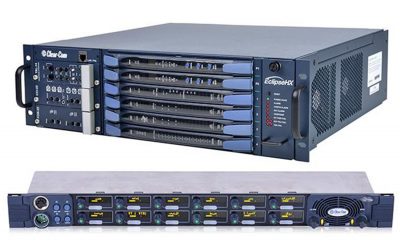Know when to go ahead, stand by or over.
Companies provide Two Way Radios to employees so that they can communicate critical information. In many cases, this communication is directly related to the safety of the employee and their co-workers, so it is really important that employees with radios know how to use them properly.
Each workplace will have it’s own specific language and rules when it comes to two way radio communication. However there are some common “best practice” habits that all organisations should follow to ensure communication is relayed efficiently and effectively. Team leaders should ensure everyone receives proper training on how to use two-way radios so they are prepared in the instance of an emergency.
Basic Terminology and meanings
Learn the lingo for basic Two Way Radio communication.
- Radio Check – What is my signal strength? Can you hear me clearly?
- Go Ahead – You are ready to receive incoming radio message.
- Stand-by – You acknowledge the incoming radio message, but are unable to respond immediately.
- Roger/Copy – Message received and understood.
- Over – Your message is finished
- Repeat – Please repeat your message
Practice Makes Perfect
Basic training for new Two-Way Radio users should include topics such as how to charge the radios, turn the power on and off, raise and lower the volume, changing channels, attaching accessories and using the accessories such as ear pieces, RSM (Remote Speaker Mic) and noise cans.
New employees will need to get accustomed to communicating using these devices. It is important to explain the basics of how to transmit messages correctly so everyone is on the same page and speaking the same language. Furthermore, it is important to make sure everyone knows how to relay a message in regards to an Emergency for your specific workplace.
Making a Two Way Radio Call
- Ensure channel is clear
- Press and hold the PTT (Push-To-Talk) button
- After 2 seconds state “Your call sign” to“Recipient call sign”
- Wait for recipient to reply “Go for (Recipient call sign)”
- Press and hold the PTT button, wait 2 seconds and convey your message
Conduct Radio Checks
At the start of each shift, employees must make sure their radios are charged, turned on, set to the appropriate volume, and tuned to the appropriate channel.
To verify their radios are ready, employees should perform a “radio check” before their shift begins. This can be as simple as saying “Check, check, can you hear me?” and then waiting for another party to confirm the message was “loud and clear”.
Companies may find it beneficial to ask employees to make radio checks several times each day. It would be bad news for an employee to suddenly need the radio for an emergency but discover they are out of range or on the wrong channel.
Two Way Radio Etiquette
Using a two-way radio to communicate requires some formality and discipline. Following these rules of Two Way Radio etiquette will ensure effective communication, thus helping to keep employees safe and productive.
- Do not try to talk if someone else is already talking; wait for them to pause
- Don’t cut off another conversation until it’s over to start your own – (unless there is an emergency)
- Think before you speak to help ensure a smooth message
- When beginning a transmission count 1 second after pressing the talk button and hearing the beep before saying your first line. This allows the system to “key up” and avoid your first words being missed.
- Always begin your first transmission with your name and the recipient name OR their code name. Wait for that person to confirm they are “receiving”.
- Be patient, the person may not always be able to respond the first time. Wait, and try again.
- If you are the recipient of a call and are unable to answer the question immediately, reply with “Stand by” to acknowledge the caller that you have received the message and will reply later.
- Keep the message simple. Be concise and to the point. Split long messages into shorter segments.
- If the discussion is likely to require detailed explanation a radio message to the other user notifying them that you’ll call them on their mobile is sometimes a better approach.
- Speak clearly, a little slower than usual, and at an appropriate volume. It’s important to remember not to scream. Speak at the volume that will work best for your fellow man.
- Never transmit confidential information unless you have the technology to ensure secure communication because frequencies are shared in public
- At the end of each message, include a hand-off word like “over”.
- When you hear a hand-off, wait a few seconds before speaking
- If you are not sure a message is for you, do not respond; wait until you hear your name.
- At the end of a conversation, announce the end with something like “over and out”.
In case of Emergency
It is extremely important to have a two way radio emergency protocol for your event staff to follow in times of need. The protocol mast be communicated with all staff before they start their shift.
Whether there is need for an evacuation, extra manpower, urgent medical attention or to make sure everything and everyone is safe, the emergency Two Way Radio protocol will keep staff on point in times of panic and stress.
Ideally your event or workplace would have a dedicated emergency channel that can be used in these situations.
Remember to:
- Identify yourself, your location and the nature of the emergency.
- Do not panic after and keep messages short and concise.
- Be professional, keep on point and match the tone of your voice to the message you want to get across.
- Follow the procedures for an Emergency as specified by your work place.
- Keep radio chatter to a minimum until the situation is under control

Download our Free Two Way Radio Site Office Posters

Enter your email below and we will send you a copy of our Two Way Radio site office posters.
- Phonetic Alphabet Poster Download
- Two Way Radio Site Communication Poster Download
- Ensure you complete a radio check at the start of your shift
- Ensure you have enough battery
- Ensure volume is at a reasonable level
- Ensure you speak directly into microphone
- Keep messages short, clear and concise
- Always make sure the lines are clear before you begin your transmission (unless in emergency)
- Do not talk over other conversations (unless in emergency)
- Be patient, the person may not always be able to respond the first time. Wait, and try again.
- Never transmit confidential information
- If a discussion requires a more detailed explanation, call them on the mobile or request a meeting.
We hope you found this information useful. Contact us to enquire about hiring Two Way radios for your next event.



